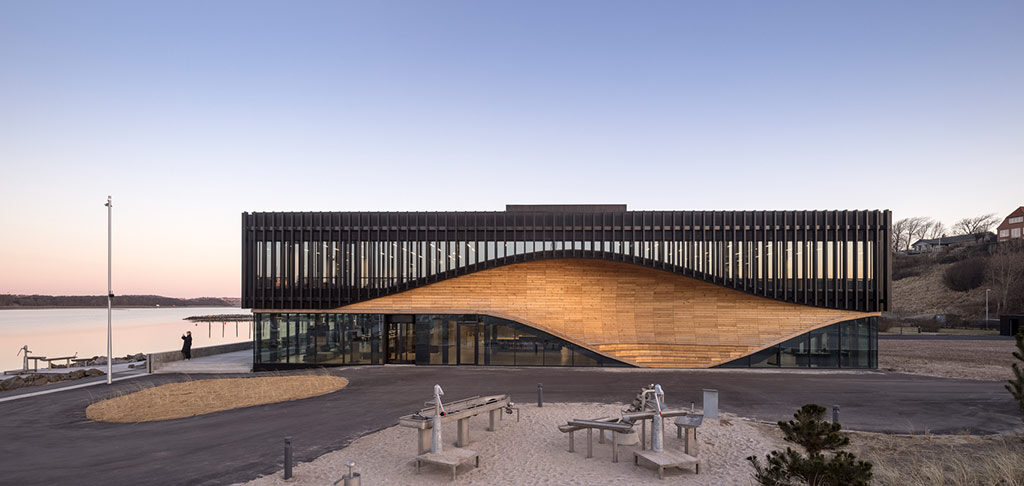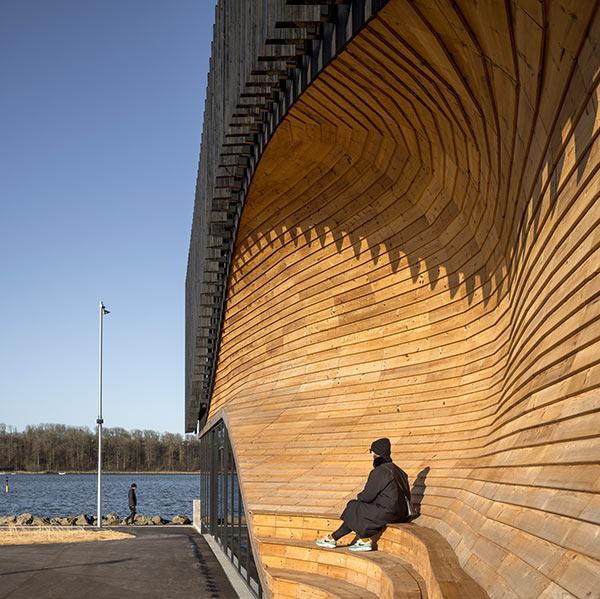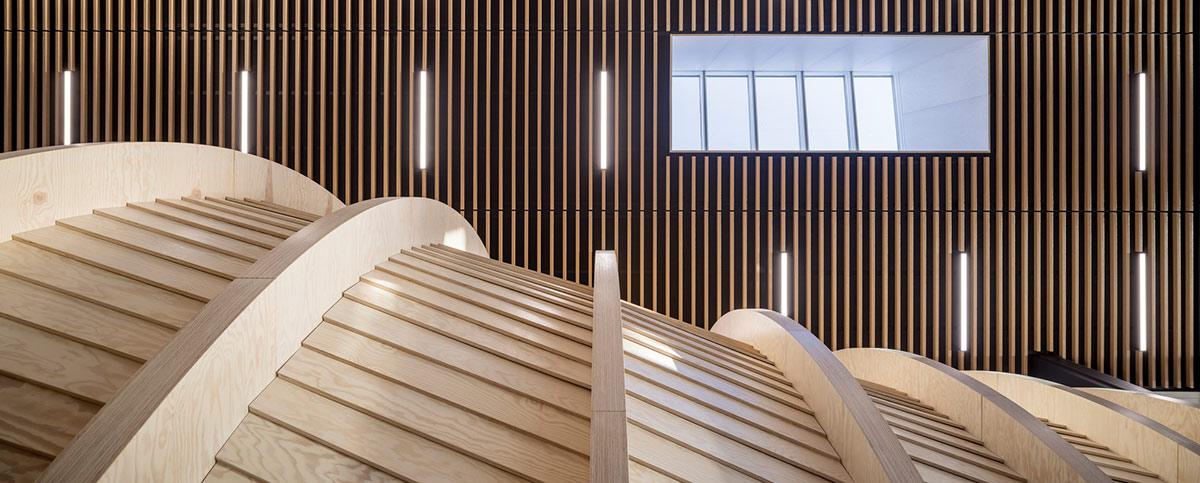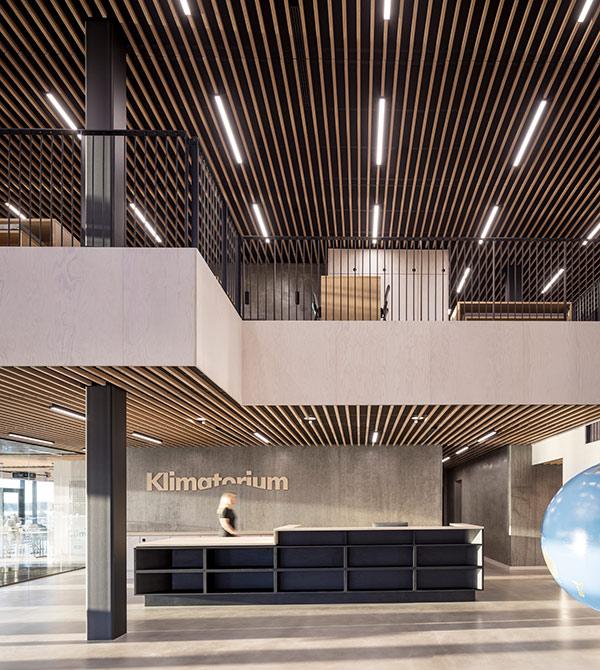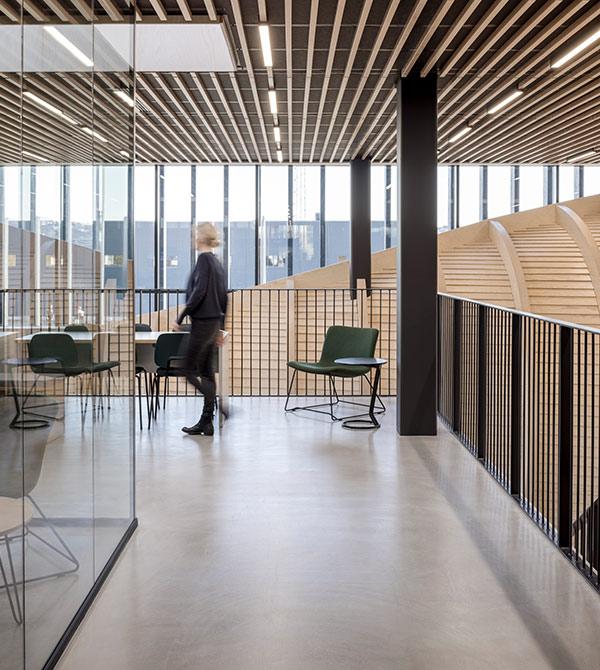Wave of the future
The Klimatorium in Lemvig, Denmark, devises strategies to counteract global climate change. Situated on the coast of Jutland, the building designed by architects 3XN has already achieved iconic status.
Lemvig is a town in western Denmark where the impact of climate change can be clearly witnessed by residents and visitors alike. Torrential rain, high tides and storm surges are making the area around the Limfjord increasingly challenging. In 2012, the authorities erected flood defences with the aim of protecting the town. And it is in the direct vicinity of these defences that innovative solutions are now being explored to counteract the consequences of global warming around the world – in Lemvig’s Klimatorium. This centre of green expertise with its eye-catching timber wave is already regarded as an architectural icon and landmark in the fight against climate change.
Easily recognized
The striking wave motif on the facade lends the building its unmistakable character. Designed by the architects at 3XN/GXN, the recessed undulating shape made of pine wood could be mistaken for a ship’s hull, which reflects the region’s long shipbuilding tradition. On the other hand, the wave serves as public space for passers-by and visitors who can sit here looking out over the sea in an area that is sheltered from the weather.
The wave tells the story of the site and also refers to the serious challenges we face as a result of climate change.
Jan Ammundsen, Head of Design at 3XN
3XN’s Head of Design Jan Ammundsen explains their thinking behind the design: “The building has a rectilinear, stringent expression but forms a wave shape that lends it a distinct and easily decoded identity. The wave tells the story of the site and also refers to the serious challenges we face as a result of climate change.”
Form follows behaviour
The two-storey building appears both transparent and open. Its main aim is to attract residents and tourists who visit exhibitions on climate change, while the café and function room has also positioned the Klimatorium as a local venue for conferences, concerts and events. Outside, the grounds were designed by landscape architects SLA from Aarhus. They include a skatepark, parkour area and water playground.
Right from the outset, this concept of people breathing life into buildings was specified by the Danish architects’ approach to design, “Form follows behaviour”. Their thoughts always begin with the question: How will people behave inside and outside the building?
One of the architects’ primary considerations is for architecture not just to merely address ground sealing and the use of resources, but also to give something back to the people in their surroundings. 3XN founder Kim Herforth Nielsen explains the advantage of human-focused design: “The more generous you can be to the surroundings, the better the outcome will be both for the building itself but also regarding the public response.”
Climate solutions made in Denmark
Besides raising awareness in exhibitions on related topics, the climate centre is also a kind of research and development centre for green technologies. Scientists, companies and local authorities work together here to develop projects for climate protection and adaptation to climate changes that have already occurred.
These solutions range from innovative water technologies and facilitating circular energy concepts through to the development of water-permeable asphalt for roads. A recent construction on the western coast of Jutland, the centre is designed to strengthen Denmark’s role as an exporter of green technologies and climate solutions. And it also aims to help Lemvig and the central region of Denmark become established as a centre of expertise on an international level.
The Klimatorium is a further step towards a resilient future. A wave that is helping to inspire the necessary change.
Text: Gertraud Gerst
Translation: Rosemary Bridger-Lippe
Photos: Adam Mørk, 3XN
